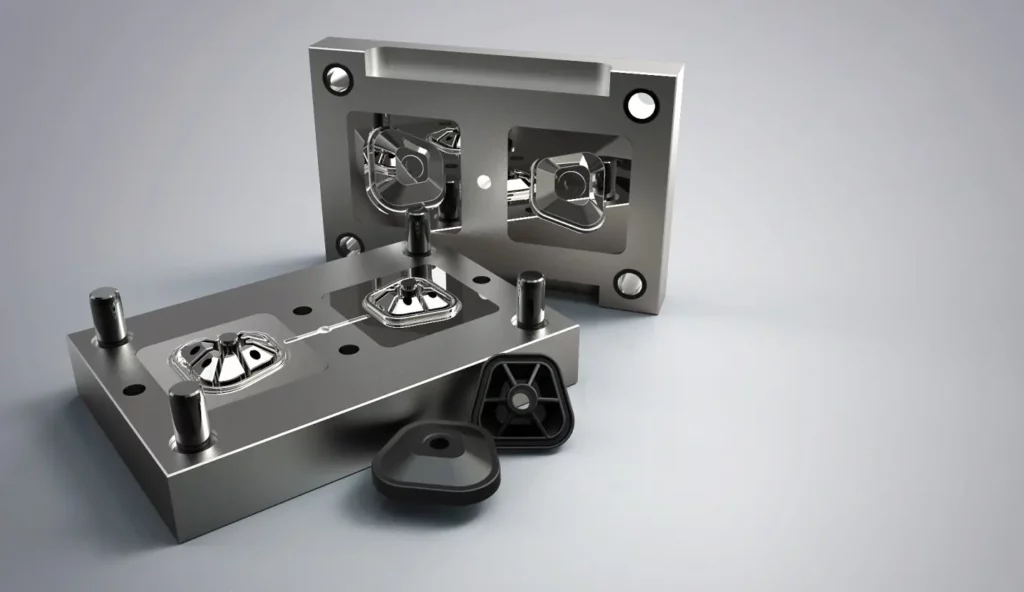Rapid injection molding processes
Injection molding is an industrial process usually used for fabricating substances from plastic toys and jewelry to automotive body parts, containers, water bottles, and telephone cases. Most of the parts of plastic that we use in daily life are injection molded. It’s a rapid procedure to make a mass amount of uniform plastic parts. The elasticity in shape and size attainable by the utilization of injection molding has reliably broadened the boundaries of design in plastics and permitted considerable replacements of traditional materials due to design freedom and light-weighting.

Benefits of injection molding in rapid tooling industry:
Rapid injection molding processes offer a variety of advantages not found in other prototyping techniques.
1. Strength
By the design for manufacturability, which makes sure the finest ejection angles and identical wall thickness, the melted resin is injected into the cavity under high. It makes sure that the part has no pores and therefore the quality of the ultimate material is that the absolute best. Such things cannot be said about 3D-printing that usages thin threads or powder and sinters them together which outcomes in the ultimate material which may have pores or uninterred regions.
2. Surface Finish
The molded part surface finish depends on the standard of the mold. The cavity is typically made by CNC milling then some finishing operations. The foremost common between them is polishing. Additionally, to sharpen the inner corners of the cavity EDM cutting is used. The outcome surface finish is often as small as Ra 0.8 mcm.
3. Exceptional Accuracy
Injection Molding has greater accuracy as compared to other prototyping techniques. For instance, 3D printing will produce an IT9 whereas rapid injection molding is restricted merely by the molding accuracy, which may be as greater as IT7.
4. Almost zero Material Waste
Most of the prototyping techniques don’t take materials under consideration at all. Which is okay once you are making single-digit batches? But some of the products need wide testing in live conditions. For instance, medical prototypes, their last testing stage includes giving out the item to the shoppers for lifestyle tests. That means you will need hundreds or maybe thousands of testers and losing about 50 percent of the blank material or May greater will cost you a substantial sum. Afterward RIM injects simply the specified amount of plastic into the cavity, carrying the waste to the least.
5. The Mold is often used for a Significantly Large Batch
Most prototyping processes proficient when you are making a smaller number of parts. For instance, silicone casting is feasible for up to fifteen parts approximately. Then, the casting form getting worse so much and you require to manufacturing a new form. Rapid Injection molds aren’t as tough like conservative ones but they will still endure more runs than most prototyping processes. The simplest of them can make more than 1lacs parts before getting excessively worn.
6. Universality
With different plastics, 3D-printing would need a significant reworking of the entire system. You will need to vary the container with the blank material and alter the settings to ready for the print an equivalent part from a different plastic. Within the worst case, you will need different equipment.
7. Efficiency
Prototyping methods aren’t very efficient if you will compare them with mass production. One part is going to be machined for a longer time than an equivalent part. When it’s mass-produced only because the blank is nearby to the ultimate part and there’s less to the machine. RIM technologies have a lesser time interval between all the opposite prototyping techniques, therefore the greater your batch is, this technology becomes the extra feasible.
The problem that cause bubbles within the final injection molded parts:
One small issue which will be expensive in injection molding is bubbling and we know time is money. Bubbles can form because of two causes: vacuum voids or gas pockets. Both of these occur due to air-flow related issues
If you want to distinguish between vacuum voids or gas pockets you’ll use an easy heat test. You just need to use a small lighter or hot air gun, warm the side of the part that has the bubble till it starts to melt-up. If the bubble ruins, it is a vacuum void and on the other hand, if the bubble enlarges, you have a gas pocket.










